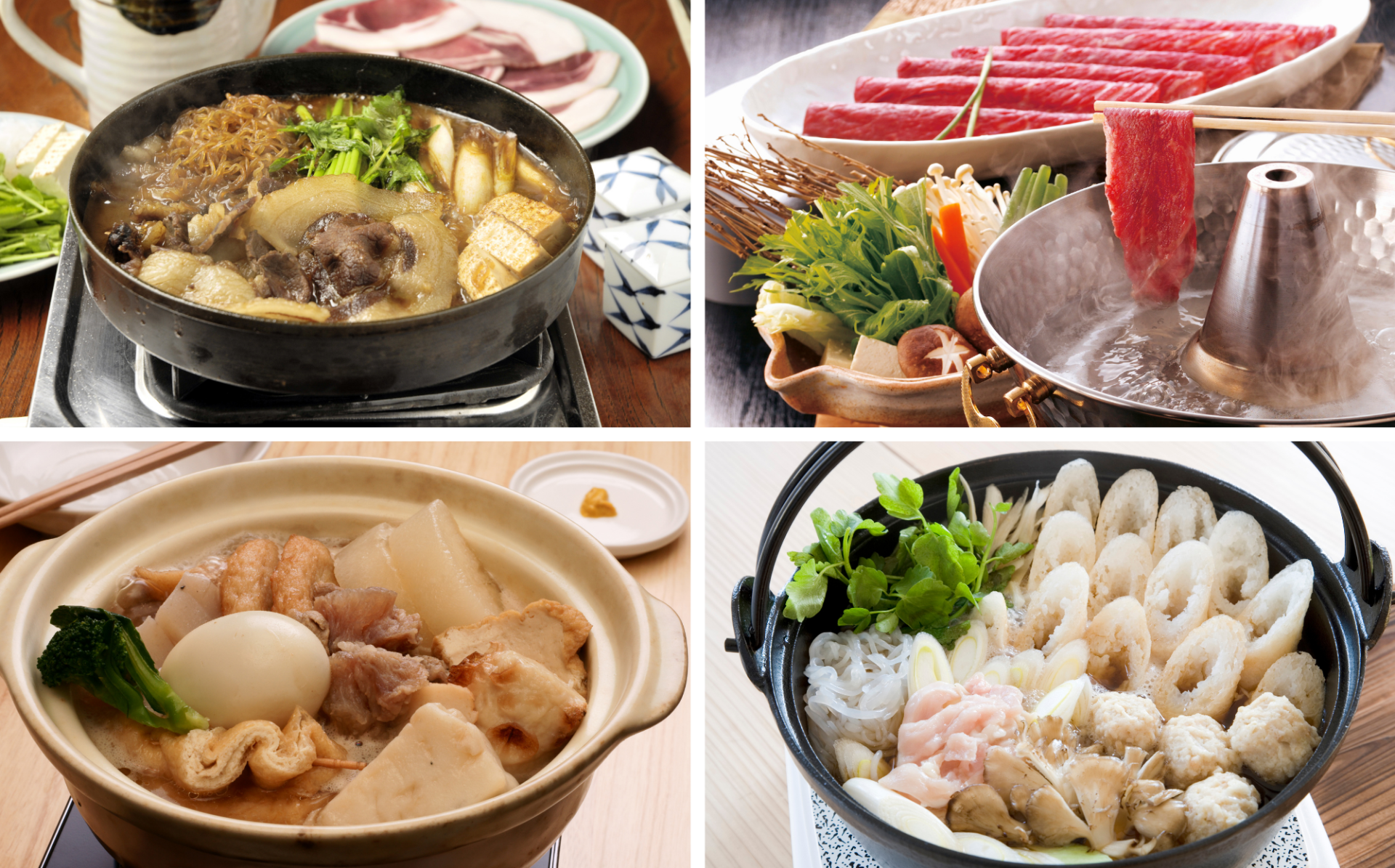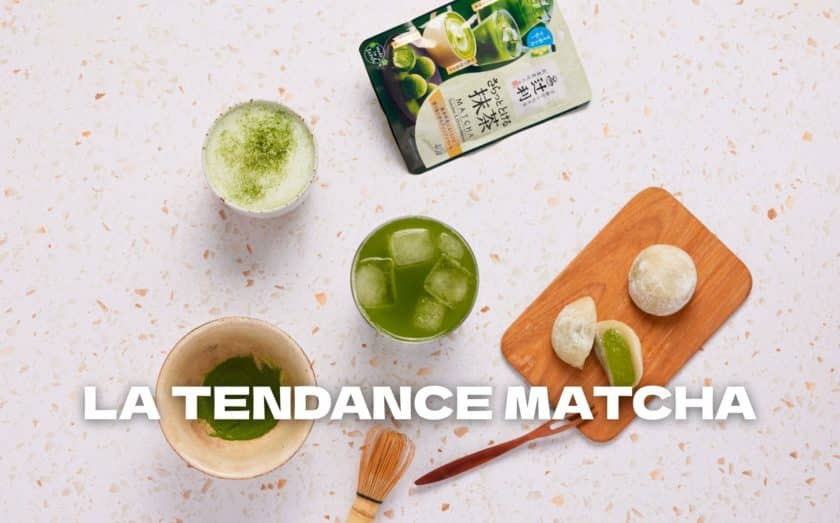Japanese hot pots: nabe, sukiyaki, oden, shabu shabu, kiritanpo… What are the differences?
If you work in the Japanese food industry, you have probably already heard of (and maybe even tasted!) nabe, those famous Japanese hot pots.
But can you tell the difference between sukiyaki, oden, shabu shabu or kiritanpo?
Let’s look at the specificities of these Japanese winter staples!
Nabe: Japanese winter hot pot
Nabe literally means “pot” in Japanese. By extension, it refers to the family of Japanese dishes consisting of a pot placed on a hot plate in the middle of the table.
Although the ingredients are very varied, nabe usually consists of a broth in which various vegetables, tofu, thin strips of meat and noodles are cooked.
There are a large number of dishes belonging to the nabe family, with variations in recipes between families and regions. However, four key recipes can be identified.
Sukiyaki: the essential Japanese hot pot
Sukiyaki is a popular dish at parties with colleagues and friends to celebrate the end of the year in Japan (Bonenkai).
Thinly sliced beef, vegetables and konjac noodles are gently cooked in a slightly sweet broth made from mirin, soy sauce, sake and sugar.
It is traditionally accompanied by a small dish of raw egg yolk to dip the cooked meat in before eating.

Pictures: sukiyaki meal with the egg yolk to dip the beef
Shabu shabu: the Japanese family meat fondue
The name of the dish shabu shabu comes from the onomatopoeia of the noise produced by the ingredients soaked in the broth.
Unlike sukiyaki, the ingredients (beef, vegetables, etc.) are placed on plates next to the broth and each guest cooks what they want to eat, at their own pace. The broth is light and tasty, made from konbu seaweed.
Ponzu sauce and sesame sauce traditionally accompany this dish. It is customary to cook udon noodles in the broth to finish the meal.
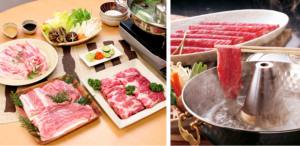
Pictures: shabu shabu meal and it’s hot broth to cook the ingredients
Oden: hot pot on the spot or to go
Oden is a popular dish that can be found quite easily in Japanese supermarkets and street food stalls.
Eggs, daikon, konjac and chikuwa (a kind of fish cake) are cooked in a konbu broth and are often served with a dash of Japanese karashi mustard.
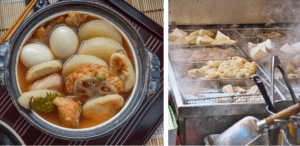
Pictures: an oden served in a restaurant and its street food version with different toppings to choose from
Kiritanpo: the emblematic Japanese hot pot of the Akita region
A little less known to the public but nevertheless delicious, kiritanpo is a nabe that honors the ingredients of the Akita region: chicken and rice.
In a soy sauce and chicken broth, vegetables, chicken and crushed grilled rice sticks are cooked.
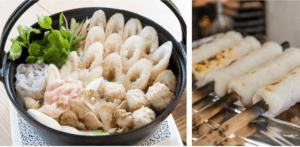
Pictures: a kiritanpo nabe and the rice sticks being grilled
Foodex, all the ingredients for your Japanese nabe recipes
So that you can add quality nabe to your menus, Foodex offers you a wide range of ingredients for your Japanese hot pots: broths, soy sauces, mirin, konjac, shirataki noodles, udon, mushrooms… to be found in our catalogue!
For more information on our products and our news,
don’t hesitate to follow us on social medias.

